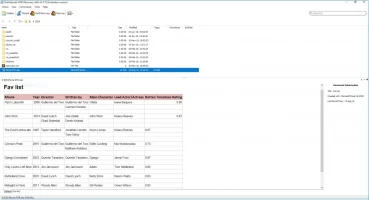What are VMware vMotion and its peculiarities?
Here you will find out:
- what is vMotion
- what are VMware vMotion benefits
- when DiskInternals can help you
Are you ready? Let's read!
What is vMotion?
This is one of the latest technologies available in VMware vSphere.
Storage vMotion VMware allows you to move virtual machine storage, i.e., its virtual disks on another VMFS/LUN volume, and this all happens without stopping the services and applications. There is an opinion that vMotion is needed in case of some VM failures, but this is not entirely true. This function VMware vMotion is used when the virtualization system is operating in the correct mode and installed correctly.
So, you can automatically allocate and increase entire pools of resources.
Also, using this technology, equipment maintenance is fast and without delays.
VMware vMotion benefits:
- Performance. Increased productivity due to no downtime.
- Safety and Reliability. This is evidenced by the trouble-free operation of VMotion for decades and only positive user reviews.
- Manageability, thanks to the Migration Wizard. His recommendations will be beneficial and will facilitate the migration process.
- Universality. It can be any OS and hardware.
- Interoperability with SAN 4 GB, NAS, and iSCSI SAN. All these simplify the work, makes it more manageable and less expensive.
- Configurable processor compatibility settings.
- The ability to simultaneously carry out several migrations. This can be done without interrupting the process.
- Ability to assign priority to a specific live migration.
- The ability to keep a clear record of all migrations, while maintaining the basic parameters of migration.
- Ability to set parameters for migration (specific time, with/without an administrator, etc.).
How does VMware vMotion work?
Let's analyze three main technologies on which the principle of operation of VMware vCenter vMotion is built.
- 1. All VM information is in one large file in some of their repositories; for example, in Fiber Channel, iSCSI SAN, or NAS. And the file system Vmware(VMFS) allows you to access this file from multiple servers.
- 2. Due to the high network speed, there is no delay when switching from one server to another - it takes a matter of seconds, so the user will not even notice it.
- 3. The Networks used by the virtual machine are also virtualized by the ESX core server. This allows you to maintain accurate execution status, active network connections, and network identification.
Together, these three conditions guarantee a process without downtime.
How to revive your deleted or damaged VMDK files in VMware VM?
DiskInternals VMFS Recovery will help answer this question.
This application has over 15 years of experience in recovering files VMDK. These can be problems with the physical disk, software failure, virus attacks, RAID failure and, of course, the human factor - this application comes in contact with all these and perfectly fixes it. Designed for clear reading of the VMware VMFS file system and restores information from damaged or serviceable disks in VMFS format.
The program restores VMDK files in VMware vSphere and ESXi / ESX Servers. In addition, DiskInternals VMFS Recovery has automatic recovery and preview before export.
Algorithm:
- 1. Launch SSH if it is needed.
- 2. Initially, you need to download and install the application on your Windows computer.
- 3. Then open local or remote disk with the Recovery Wizard.
- 4. Find the .vmdk files you need.
- 5. Open founded and mounted VMDK file by double-clicking and checking its integrity.
Next, you need a license and a license key, which are purchased here. After that, save the recovered files and forget about the problem.

